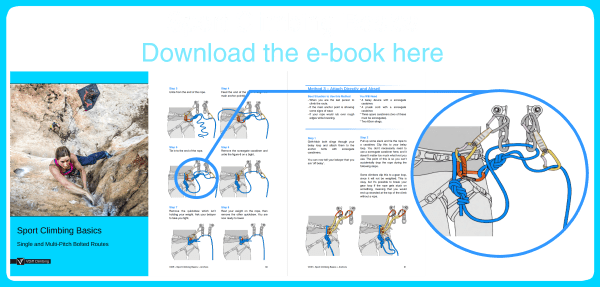'Sport Anchors - Setting Up a Top Rope' is part of the book - Sport Climbing Basics.

With the security of an anchored rope above, top-roping is the safest way to climb. A top-roped climber can rest on the rope whenever they are too tired to continue, safe in the knowledge that they will only fall a few inches. Top-roping is great for beginners, large groups or for experienced climbers who want to push their physical limits.
You Will Need:
* Four screwgate carabiners
* A cordelette/ long sling
Best Situation To Use this Method
- If the next climber will top rope the route
Step 1
After leading up to the anchor, clip a screwgate carabiner directly into each bolt. They will usually be better orientated if you clip them underneath the lowering rings.
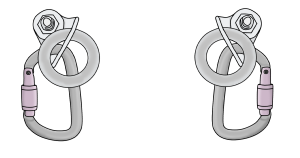
Step 2
Clip the sling or cordelette to both carabiners. Pull it down in the middle so both strands of sling are equal.
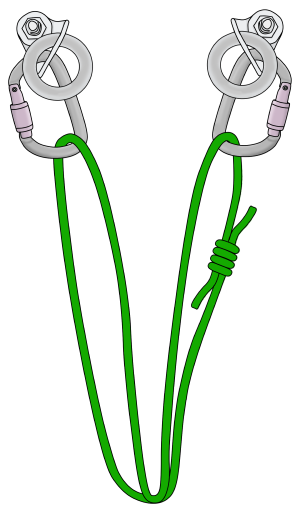
Step 3
Tie an overhand knot in it.
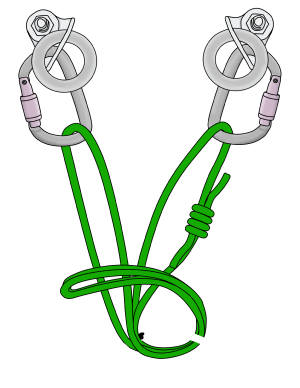
This creates a central point.
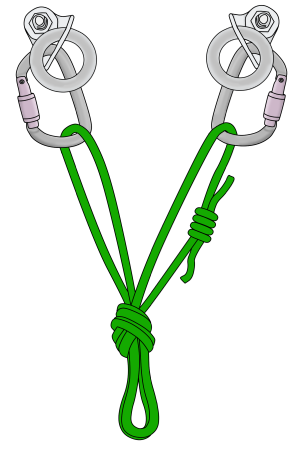
Step 4
Clip two screwgate carabiners into the central point with their gates facing in opposite directions.
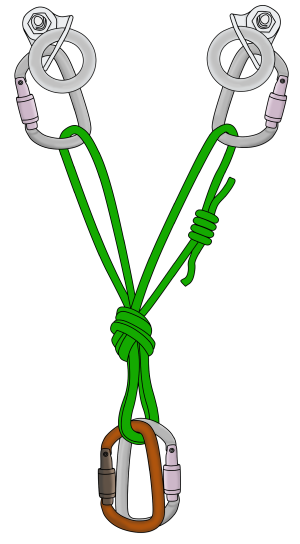
Step 5
Clip the rope through the carabiners from the back so the rope is coming out towards you.
Step 6
Ask your belayer to take you tight. You are now ready to lower and the top rope is set.
A more advanced, but often better, alternative is to use the quad anchor.
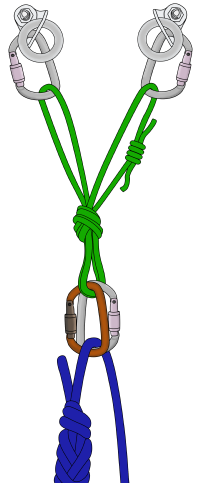
Setting Up a Top Rope from Above
At some crags it is possible to set up a top-rope by walking to the top and equalizing anchor bolts or trees. Be careful when walking around the top of a crag un-roped. You may need to make an anchor further back from the cliff edge and then be put on belay while you set up the top-rope anchor.
If the bolts are set back on a ledge, or situated in a place which causes the rope to rub over an edge, you should extend the anchor and pad the edge.
Make sure to double up the slings or cordelettes which extend the anchor over the edge. An old piece of carpet, foam pads or garden hose pipes (without metal lining) make good padding.
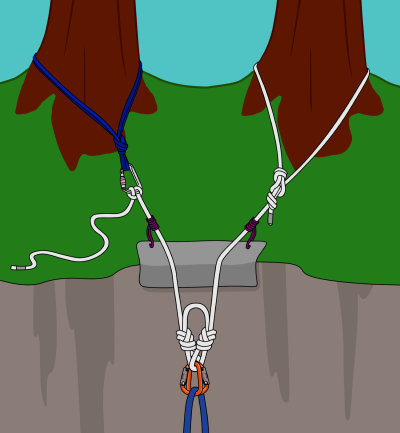
Even if your anchor is bomber, extended and well padded, it is wise to check it periodically if it is being used repeatedly. Setting up a trad anchor using trees or other trad gear is explained here.
